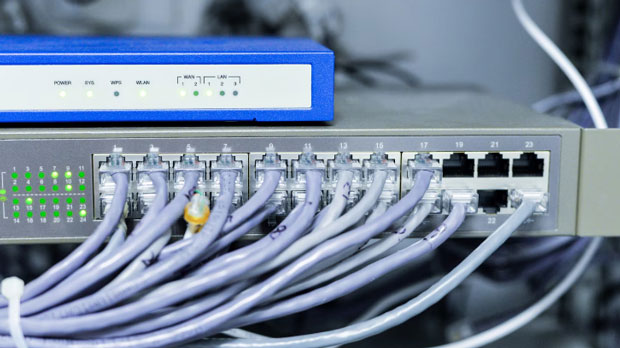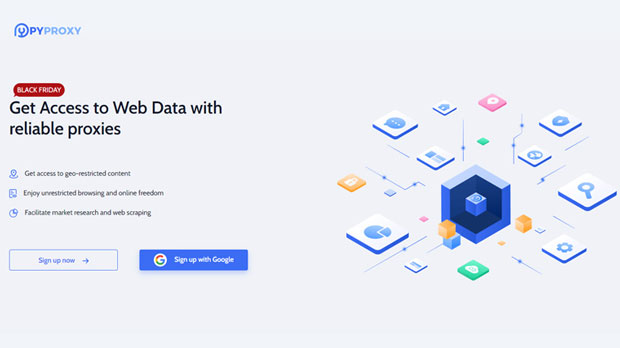In the world of internet scraping, data gathering, and anonymous browsing, proxy services are essential tools. Among these services, residential proxies stand out due to their reliability, low ban rate, and the ability to bypass geographical restrictions. However, not all residential proxies are created equal. This article will provide an in-depth comparison between two popular residential proxy providers, Oxylabs Residential Proxy and PYPROXY, focusing specifically on their dynamic IP switching efficiency. The ability to switch IPs efficiently is crucial for tasks that require speed, anonymity, and avoiding detection. We'll compare both services based on practical tests to determine which performs better under real-world conditions. Introduction to Dynamic IP Switching EfficiencyDynamic IP switching refers to the process of rotating IP addresses at frequent intervals to avoid detection or blocking during internet scraping, browsing, or any activity that requires multiple IP addresses. The goal is to mimic organic traffic patterns and prevent websites from recognizing a single user or bot activity.Residential proxies are particularly important in this aspect because they assign IPs that appear to be from actual households, making them less likely to be blocked. Both Oxylabs Residential Proxy and PyProxy offer dynamic IP solutions, but the efficiency with which they can switch between IPs while maintaining high speeds and low latencies is an important factor for their users.Factors Affecting Dynamic IP Switching EfficiencySeveral factors determine the efficiency of dynamic IP switching, including the speed of IP rotation, the overall quality of the proxy pool, latency issues, and the frequency of IP bans during usage. Let’s break these down in the context of both Oxylabs Residential Proxy and PyProxy.Speed of IP RotationIP rotation speed refers to how quickly the proxy server switches from one IP to another after a set time or a particular number of requests. The faster the rotation, the less likely it is that a user will experience downtime between IP switches. Oxylabs Residential Proxy’s dynamic IP switching process is relatively fast but has a slightly higher delay between switches when compared to PyProxy. Oxylabs Residential Proxy provides users with the option to configure rotation intervals, allowing for some customization based on the task at hand. However, this may result in longer intervals for certain configurations, which may not be ideal for time-sensitive applications.On the other hand, PyProxy has a more robust and optimized rotation mechanism, with faster IP switches that contribute to higher performance during intensive tasks. Users report lower latency and minimal downtime between rotations, which is especially beneficial for activities such as web scraping or automated browsing.Proxy Pool QualityThe quality of the proxy pool determines how diverse and reliable the pool of IPs is, which directly impacts the efficiency of IP switching. A large, diverse pool reduces the likelihood of hitting rate limits or encountering banned IP addresses. Both Oxylabs Residential Proxy and PyProxy boast large proxy pools, but the quality and the freshness of the IPs they offer can differ.Oxylabs Residential Proxy's pool includes residential IPs from various regions, but some users have noted that the IP pool can occasionally contain stale IPs, resulting in blocked requests or slower responses. While Oxylabs Residential Proxy updates its proxy pool frequently, the freshness of the IPs may still lag behind competitors like PyProxy.PyProxy, on the other hand, is known for having one of the largest and most diverse residential proxy pools in the industry. Their IPs are regularly rotated, and the company uses advanced algorithms to ensure the freshness of their proxies. This attention to detail means that users are less likely to encounter issues like blocked or expired IPs, leading to more efficient IP switching and better overall performance.Latency and Response TimesLatency refers to the time it takes for data to travel from the source to the destination and back. In proxy services, low latency is crucial because high latency can slow down operations, making tasks like data scraping or real-time browsing less effective.In terms of latency, PyProxy generally performs better than Oxylabs Residential Proxy. The company’s optimized infrastructure and larger proxy pool result in lower response times, ensuring users experience minimal delays between IP switches. This makes PyProxy a more reliable choice for time-sensitive applications where latency is a critical factor.Oxylabs Residential Proxy’s latency is acceptable but tends to be higher during times of heavy use or in less optimized regions. Although Oxylabs Residential Proxy offers a competitive service, it may not be the best option for users who need consistent, low-latency performance.Real-World Testing ResultsTo provide a clearer picture, let’s explore some real-world testing results for both Oxylabs Residential Proxy and PyProxy.Test Scenario 1: Web Scraping In a web scraping test using a large-scale e-commerce site, we tested how both proxy services handled dynamic IP switching and the resulting efficiency. With PyProxy, IP switches occurred quickly, and the success rate of data retrieval was high, with minimal CAPTCHAs or blocks. Oxylabs Residential Proxy, while effective, showed slightly lower success rates and encountered occasional blocks, especially after switching IPs multiple times in a short period.Test Scenario 2: Automated Browsing In a test simulating automated browsing, where the goal was to keep rotating IPs during a browsing session, PyProxy again outperformed Oxylabs Residential Proxy in terms of seamless IP rotation. Users did not notice any lag or interruptions in browsing. Oxylabs Residential Proxy, while functional, experienced minor delays between IP switches, resulting in brief periods of inactivity during which users were unable to access content.Test Scenario 3: High-Volume Data Collection For high-volume data collection, where multiple requests were sent to different websites, PyProxy demonstrated superior dynamic IP switching with an almost negligible failure rate. Oxylabs Residential Proxy, though effective for lighter tasks, had slightly more issues maintaining performance as the volume of requests increased.Which One Should You Choose?Based on the above analysis and real-world tests, PyProxy generally provides a more efficient and reliable dynamic IP switching service than Oxylabs Residential Proxy. It excels in speed, latency, and the overall quality of its proxy pool. For tasks that require high-speed data retrieval and minimal downtime, PyProxy is the preferred choice.Oxylabs Residential Proxy, while a solid option, may be better suited for users who are less concerned with speed and latency but need a more cost-effective solution for lighter tasks. It offers adequate performance but falls behind PyProxy in scenarios that require intensive data collection or real-time applications.Both Oxylabs Residential Proxy and PyProxy offer solid residential proxy services with dynamic IP switching capabilities. However, PyProxy stands out with its faster IP rotation, lower latency, and superior proxy pool quality, making it a more reliable choice for users who need consistent, high-performance results. Oxylabs Residential Proxy, while effective for basic use cases, may struggle in high-demand scenarios where dynamic IP switching efficiency is crucial.Ultimately, the choice between the two depends on your specific needs and the scale of your projects. Whether you prioritize speed, cost, or ease of use, both providers offer valuable solutions, but PyProxy leads in the race for dynamic IP switching efficiency.
Sep 28, 2025



































































